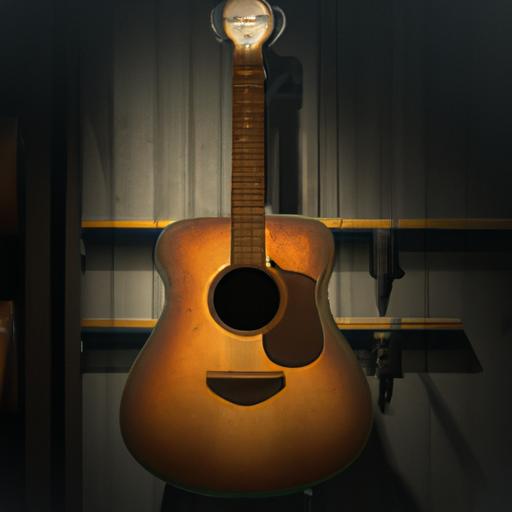Bass guitar is an incredible instrument that can bring an extra layer of depth to any song.
If youve ever wanted to learn to play the bass, youre in the right place! Well provide you with a comprehensive guide on how to get started with bass guitar, from acquiring the necessary equipment to mastering the basics and even expanding your repertoire.
Well cover seven essential tips to help you get started, including learning the parts of the bass guitar, tuning it, exploring the basics, taking lessons, using online tutorials, and more.
Lets get started!
Table of Contents
Short Answer
1. Start by purchasing a good quality bass guitar and amplifier. Research different types of bass guitars, amplifiers, and accessories available to determine which ones are best for your style and budget.
2. Learn the basics of playing bass guitar. This includes understanding the different notes, scales, chords, and techniques. You can find a lot of helpful resources online or take lessons from a qualified instructor.
3. Practice regularly. Set aside time each day to practice playing the bass guitar. Start with simple scales and chords and gradually add more complex pieces.
4. Spend time learning popular songs. This is a great way to learn new techniques and improve your skills. Find songs that you enjoy and work on learning them.
Acquiring the Necessities
If you’ve been dreaming of playing bass guitar, the first step is to acquire the necessary items.
You will need a bass guitar, an amplifier, and some other accessories like picks, strings, and a strap.
When it comes to buying a bass guitar, it’s important to find one that fits your playing style and budget.
There are many different types of basses to choose from, including electric, acoustic, and acoustic-electric.
You should also consider the size and shape of the instrument.
Some basses are designed for beginners, while others are better suited for experienced players.
When it comes to amplifiers, there are several types available.
The most common are combo amps, which combine an amplifier and speakers in one unit.
If you plan to play gigs, you may want to invest in a larger, more powerful amp.
If you are just getting started, a smaller, more affordable option might be more suitable.
Finally, you will need some accessories, such as picks, strings, and a strap.
Picks come in different sizes and shapes, so you can experiment to find the ones that feel the best in your hands.
Strings come in different gauges and materials, so you can choose the ones that best fit your playing style.
A strap is important to have so you can play standing up.
By acquiring the necessary items, you’re one step closer to becoming a great bass player!
Learning the Parts of the Bass Guitar

Learning the parts of the bass guitar is an essential step in getting started with this instrument.
Knowing the names of the different parts and how they are used will help you become more familiar with the instrument and enable you to play more effectively.
The bass guitar consists of several major components.
The body of the bass is where the strings are attached and is the main part of the instrument.
The neck of the bass is the thin part that connects the body to the headstock.
The headstock is where the strings are attached and the tuning pegs are located.
On the neck, you will find the fretboard, which is the flat surface with the metal frets.
The frets are the metal bars that divide the fretboard into different notes.
The pickups are the small electronic devices located on the body of the bass that pick up the vibrations of the strings and transmit them to the amplifier.
The bridge is the part of the bass that holds the strings in place and helps to adjust the tension.
Finally, the strings are the metal wires that stretch from the headstock to the bridge and produce the sound of the bass.
Learning the parts of the bass guitar and how to use them is important to becoming a great bassist.
Now that you know the basics, you can start to explore the basics of playing bass, such as scales, chords, and rhythms.
Good luck on your musical journey!
Tuning the Bass Guitar
Tuning your bass guitar is an essential part of learning to play.
It may seem intimidating at first, but with practice, it will become second nature.
To start, make sure you have a tuning device, such as an electronic tuner or a smartphone app.
Then, get familiar with the strings of the bass guitar.
The four strings on a bass guitar are G, D, A, and E.
Starting from the lowest string, G, tune each string to the corresponding note.
You can use the tuning device to help you find the right pitch.
Once you have the bass guitar tuned, practice playing simple notes or scales to get familiar with the sound.
As you get more advanced, you can experiment with alternate tunings to give your music a unique sound.
Tuning the bass guitar is an important step to becoming a great bassist, so make sure to practice often!
Exploring the Basics

Exploring the basics of playing bass guitar is an important step in becoming a great bassist.
It is important to learn the parts of the bass guitar and how to tune it.
After that, one can begin to explore the basics of playing, such as scales, chords, and rhythms.
Scales are the foundation of any type of music and are essential for playing bass guitar.
One can start with the basics of major and minor scales and then explore different types of scales such as the pentatonic and the blues scales.
Chords are another important component of playing bass guitar.
By understanding chords, one can learn to play melodies and progressions.
Chords can be learned easily by understanding the root note and intervals between the notes.
Rhythms are the backbone of any type of music.
Learning basic rhythms and grooves is essential for playing bass guitar.
It is important to understand the concept of pulse and time signature.
One can start with basic rhythms such as eighth notes and quarter notes and then explore more complex rhythms such as syncopation and polyrhythms.
Once the basics are understood, one can start to practice and develop their skills.
It is important to practice regularly and develop a consistent practice schedule.
One can use online tutorials or take lessons to help them learn the basics and develop their skills.
As one practices and develops their skills, they can begin to explore more advanced techniques such as slapping and tapping.
With consistent practice and dedication, one can become a great bassist.
Taking Lessons
Taking lessons is a great way to get started with bass guitar.
It can provide you with a structured learning approach, and help you understand the basics of playing the instrument.
With a qualified instructor, you can learn the correct technique and gain valuable knowledge about scales, chords, and rhythms.
You can also ask questions and get personalized feedback along the way.
Finding an instructor can be as easy as searching online or asking around at local music stores.
You can even take lessons online if you dont have access to a qualified instructor.
Regardless of where you take lessons, youll be able to learn the fundamentals of playing bass guitar and eventually master the instrument.
Using Online Tutorials

Using online tutorials to learn to play the bass guitar is an increasingly popular option for those who are just starting out.
With so many free and paid resources available, it’s easy to find lessons and tutorials that can help you get started.
From beginner-level lessons to advanced techniques, there are plenty of options to choose from.
To get the most out of your online bass guitar lessons, it’s important to choose the right resources.
Start by researching the different types of tutorials available, such as video lessons, blogs, online communities, and forums.
Decide which method is best for your learning style and budget.
Once you’ve chosen the right type of tutorials, make sure to practice regularly.
This will help you master the basics and progress faster.
Additionally, don’t be afraid to ask questions or seek feedback from experienced bassists.
With the right resources and dedication, you’ll be playing bass guitar in no time!
Expanding Your Repertoire
Once youve mastered the basics of playing bass guitar, its time to start expanding your repertoire.
Doing so will give you the opportunity to explore different musical styles and become a more versatile bassist.
Here are some tips to help you get started.
First, make sure youre comfortable with the basics.
Take some time to practice scales, chords, and rhythms until you can play them with ease.
Once youve got a good handle on the basics, you can begin to explore different genres.
Listen to as much music as you can.
Listen to different genres and styles of music, and pay attention to the bass lines.
This will help you develop an understanding of the various techniques and styles used in different genres of music.
Practice different styles.
Once youve developed a good understanding of the various styles, start practicing them.
This will help you develop your skills and become more versatile as a bassist.
Take lessons.
Taking lessons from a qualified instructor can help you learn different techniques and styles faster.
A good instructor can help you develop your skills and understand the nuances of different genres.
Collaborate with other musicians.
Playing with other musicians is a great way to expand your repertoire.
It will help you learn different techniques and develop your skills faster.
Explore different types of basses.
Different types of basses have different tones and sounds.
Exploring different basses can help you develop a better understanding of how to use different tones to create different sounds.
Finally, dont be afraid to experiment.
Experimenting with different styles and techniques can help you develop your own unique sound.
It can also help you become more creative and push your boundaries as a bassist.
Final Thoughts
Getting started with bass guitar can be an exciting journey! With the right equipment, knowledge of the parts, and the basics of playing, you can begin to explore the world of bass guitar.
Taking lessons or using online tutorials to help you learn can be incredibly beneficial to your progress.
As you practice and develop your skills, you’ll be able to expand your repertoire and become a great bassist.
So what are you waiting for? Get started on your bass guitar journey today!

